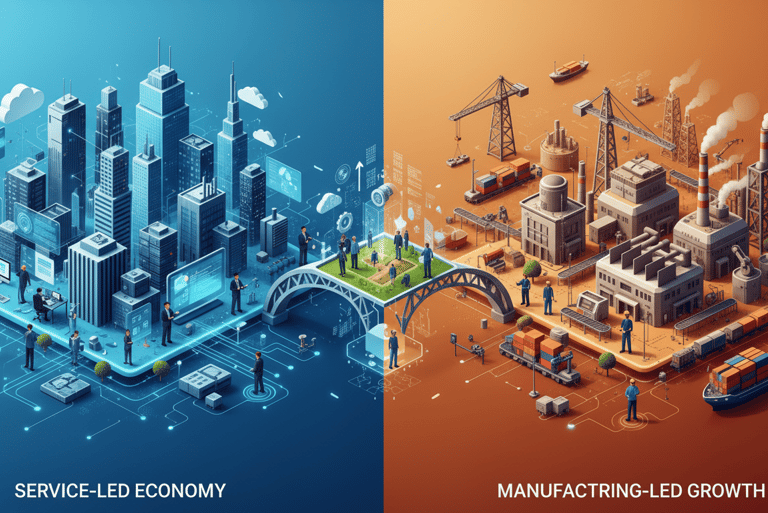Moving Forward Together: Mutual Cooperation


While India’s economy is service-sector led and South Korea’s was manufacturing-led, the two economies share civilizational heritage. India has been in a catch-up phase since the 1990s, with its GDP growth rates converging with, and occasionally surpassing, South Korea's in the early 21st century.
The comparative analysis reveals several opportunities for mutually beneficial cooperation:


1. Innovation and Technology Transfer: Korea possesses an absolute edge in input variables related to innovation investment and scientific manpower. However, India has a reputation for having high quality public research institutions. Since South Korea is an important investor in India, by generating strong university/industry linkages with Indian institutions, Korean firms operating in India can derive significant benefits from research, while India receives higher benefits of technology transfer.


2. Trade and Supply Chain Diversification: The current global environment, characterized by de-risking supply chains and geopolitical developments, presents a crucial opportunity. India can attract labour-intensive and human skill-intensive value chains from developed allies of the US, including South Korea, to accelerate manufacturing growth.


3.Learning from Development Models: The differences in their development patterns offer policy lessons: Manufacturing and Structural Balance: India skipped the phase of industrialization and prematurely turned toward a service-oriented economy. This structural imbalance led to low social indicators and high poverty incidence. India can learn from South Korea’s success in using the manufacturing sector as the engine of growth to address India’s high workforce share in agriculture and unemployment challenges.


India’s R&D expenditure (% of GDP) is notably low (0.8% in the early 2000s) compared to South Korea's (2.60%). For India to spur economic growth and transition into the knowledge economy, it must follow the strategic example of South Korea by increasing investment in research and development. State-Market Complementarity: Both countries’ experiences suggest that sustained economic growth relies on a more inclusive view of national systems of innovation that encompasses a judicious combination of the state and the market.
By leveraging South Korea’s technological and manufacturing expertise alongside India’s high-quality research base and growing market, both nations can achieve mutually beneficial economic outcomes and enhance strategic cooperation.
Investment in R&D
Connect
Join us in sustainable innovation efforts.
Engage
Support
© Donghaeng-manthan 2025. All rights reserved.
